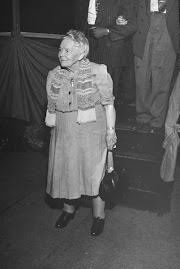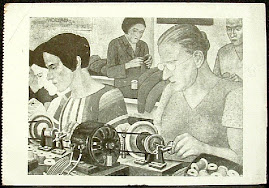
I'm doing something a little unusual in this blog posting. Something a little "lighter" from the regular topics.
 Members and friends of our "Club," the Hardwood Creek Trail Club of the CPUSA, gathered the other night for a friendly "Cribbage tournament" and I found out there are lots of people who don't know how to play this fun game. They had fun learning. We had fun teaching.
Members and friends of our "Club," the Hardwood Creek Trail Club of the CPUSA, gathered the other night for a friendly "Cribbage tournament" and I found out there are lots of people who don't know how to play this fun game. They had fun learning. We had fun teaching.The game is especially suited for activists who want to sit and have a leisurely discussion about the world and talk about what can be done to make it better.
In a lot of ways to talk things over during a game of "Crib" is better than holding another meeting and a lot more fun for everyone.
If you haven't played Cribbage; all you need is a cheap Cribbage Board and a deck of cards.
Our Club had a great experience with our evening of Cribbage; eleven couples showed up. Lots of fun. Good conversation. And everyone brought a treat to share. I never popped so much pop corn!
Here is a great web page for reference... just leave the computer on and click on this page to resolve any problems and to find rules or how to score different hands:
http://www.cribbage.org/rules/

Lisa

Here are the rules:
Six Card Cribbage
This page is based mainly on a contribution form Mike Block agentblock@yahoo.com, with additional material from David Dailey, John McLeod and others.
Contents
Introduction
Two-handed play
Object
Board and Pegs
Deal
Discard
Start Card
Play of the Cards
Scoring during the Play
The Show
Winning the Game
Four Handed Play
Three-handed play
Variations
Introduction
Six Card Cribbage is basically a game for two players, but adapts easily for three players, and for four players in fixed partnerships - a very useful feature. It is now the standard form of Cribbage and widely played in English speaking parts of the world.
See also the page on Five Card Cribbage, an older form of the game which has been largely forgotten, though it is still played in parts of Britain.
Cribbage in England is primarily a pub game - indeed, it is one of the few games allowed by Statute to be played in a public house for small stakes. A game of low animal cunning where players must balance a number of different objectives, remain quick witted enough to recognise combinations, and be able to add up, it is perhaps not the most obvious of games to be so firmly associated with the English pub. It is a game where experience counts for a great deal - though luck, of course, has a large part.
It is also a game where etiquette is important. The rituals associated with cutting and dealing, playing and pegging, as well as the terminology, all serve the useful purpose of keeping things in order - and they help to give the game a flavour of its own. In card playing, as with food, authenticity matters.
Two-handed play
Two players use a standard 52 card pack. Cards rank K(high)Q J 10 9 8 7 6 5 4 3 2 A(low).
Object
To be the first to score 121 points or over (twice round the usual British design of board) accumulated over several deals. Points are scored mainly for combinations of cards either occuring during the play or occuring in a player's hand or in the cards discarded before the play, which form the crib or box.
Board and Pegs
The score is kept by means of a board and pegs. Starting at one end of the board - usually to the left of the first dealer - players peg their scores as they occur using their two pegs alternately: the forward peg shows the player's latest score, and the rear peg shows the previous score.
When a player scores, the rear peg is moved in front of the forward peg by the same number of holes as the score to show the new total. This enables scores to be easily checked and acts as a visible statement of the progress of the game. Players peg up on the outside of the board and back on the inside. The winner is the first to peg out by exceeding 120.
The exact design of the board is not critical. The diagram shows the type of board most commonly used in Britain. In North America they come in a great variety of shapes. The essential feature is a track for each player with holes representing the numbers from 1 to 120.
Deal
The first deal is determined by cutting the cards. The player cutting the lower card deals and has the first box or crib. If the cards are equal - and that includes both players cutting a ten card (10, J, Q or K) - there is another cut for first deal. The deal then alternates from hand to hand until the game is over.
It is usual to play best of three games. The opponent of the first dealer in the first game deals first and gets the first box in the second game. For the third game - if a decider is needed - there is a fresh cut to decide who deals first.
The dealer shuffles, the non-dealer cuts the cards [but see variations], and dealer deals 6 cards face down to each player one at a time. The undealt part of the pack is placed face down on the table. At the end of each hand, the played cards are gathered together and the whole pack is shuffled by the new dealer before the next deal.
Discard
Each player chooses two cards to discard face down to form the crib. These four cards are set aside until the end of the hand. The crib will count for the dealer - non-dealer will try to throw cards that are unlikely to make valuable combinations, but must balance this against keeping a good hand for himself. Dealer, on the other hand, may sometimes find it pays to place good cards in the box - especially if they cannot be used to best advantage in hand.
Start Card
Non-dealer cuts the stack of undealt cards, lifting the upper part without showing its bottom card. The dealer takes out the top card of the lower part, turns it face up and, after non-dealer replaces the upper part, places it face up on top of the pack. This turned up card is called the start card. It is not used during the play of the cards but in the show it will count for combinations as part of both players' hands as well as of the dealer's box.
If the start card is a jack, the dealer immediately pegs 2 holes - this is called Two for his heels.
Play of the cards
Beginning with the non-dealer, the players take turns to play single cards. You play your own cards to form a face-up pile in front of yourself, keeping them separate from the other player's cards. In this stage of the game the total pip value of the cards played by both players is counted, starting from zero and adding the value of each card as it is played. This total must not exceed 31. When no more cards can be played without going over 31, the count is restarted from zero. The pip values of the cards are:
Ace = 1; 2 to 10 = face value; jack = 10; queen = 10; king = 10.
As each card is played, the player announces the running total - for example the non-dealer plays a king and says "10", the dealer plays an 8 and says "18", the dealer plays a jack and says "28", and so on. If a card is played which brings the total exactly to 31, the player pegs 2 claiming Thirty one for two as he does so.
A player who cannot play without exceeding 31 does not play a card but says Go, leaving his opponent to continue if possible, pegging for any further combinations made (see below). Bringing the total to exactly 31 pegs 2, but if the total is 30 or less and neither player can lay a card without going over 31, then the last player to lay a card pegs one for the go or one for last.
The cards that have been played are turned over and a fresh round of play starts with the cards remaining in the players' hands in exactly the same way. The opponent of the player who played last in the previous round (scoring Thirty one for two or One for last) plays first in the new round. This second round of play starts again from zero and again continues until neither can play without going over 31. The last player again scores "1 for last" or "31 for 2", and if either player has any cards left there is a further round. Play continues for as many rounds as necessary until both players' cards are exhausted. Towards the end, it may happen that one player has run out of cards but the other still has several cards. In that case the player who still has cards simply carries on playing and scoring for any combinations formed until all his cards have been played.
Example: Player A has king-king-2-2; player B has 9-8-7-6.
First round: A plays king - "10"; B plays 6 - "16"; A plays king - "26"; B says "go"; A plays 2 - "28"; A plays 2 - "30 for 3". A pegs 3, namely 2 for the pair of twos and 1 for playing the last card of this round.
Second round: B plays 8 - "8"; A has no cards left so cannot do anything; B plays 7 - "fifteen two" (B pegs 2 points); B plays 9 "24 for 3 and 1 for last" (B pegs 4 points: three for the run 7-8-9 and one for playing the last card).
Please note: it is never possible to score "one for last" and "31 for 2" at the same time. They are alternatives. If you make exactly 31 for two points just peg those two points - you do not get an additional "one for last" in this case.
Tactical note: It is often worth keeping low cards in hand for this phase of the game, especially when there is a strong possibility of being able to peg out before one's opponent.
Scoring during the play
A player who makes any of the following scores during the play pegs them immediately.
15:
If you play a card which brings the total to 15 you peg 2 claiming Fifteen two.
31:
As mentioned above, if you play a card which brings the total to exactly 31 you peg 2.
Pair:
If you play a card of the same rank as the previous card (e.g. a king after a king) you peg 2 for a pair. Note that (for example) a 10 and a queen do NOT make a pair even though they are both worth 10 points.
Pair Royal:
If immediately after a pair a third card of the same rank is played, the player of the third card scores 6 for pair royal.
Double Pair Royal:
Four cards of the same rank, played in immediate succession. The player of the fourth card scores 12.
Run:
A run or sequence is a set of 3 or more cards of consecutive ranks (irrespective of suit) - such as 9-10-jack or 2-3-4-5. Note that ace is low so, for example, ace-king-queen is not a run. The player of a card which completes a run scores for the run; the score is equal to the number of cards in the run. The cards do not have to be played in order, but no other cards must intervene.
Example: cards are played in the following order: 4-2-3-5-6. The player of the 3 scores 3 for a run, then the player of the 5 scores 4, and the player of the 6 scores 5.
Another example: 4-2-3-4-3. The player of the first 3 scores 3 for the run 4-2-3. Then the player of the second 4 score 3 for the run 2-3-4. The player of the second 3 scores nothing because the 3 does not complete a run.
Another example: 4-2-6-5-3. The final 3 scores 5 points for a 5-card run. Nothing is scored before then, because there is no run until the 3 is played.
Last Card:
If neither player manages to make the total exactly 31, whoever played the last card pegs 1.
Note that to score for pair, pair royal, double pair royal or run, the cards must have been played consecutively during a single round of play. If one player had to say "go" while the combination was being formed, the combination is still valid, but if both players are unable to play, causing a new round of play to be started from zero, all combinations are started afresh.
Example 1: Player A has 10, 10, 9, 6; player B has 7, 6, 5, 4.
A plays 9, B plays 6 (scoring fifteen two), A plays 6 (scoring two for a pair), B plays 5. The total is now 26; A has to say "go", so B plays 4, scoring three for a run, plus one for last. The A begins again with 10, B plays 7, and A plays the other 10, scoring one for last.
Example 2: Player A has 10, 8, 7, 5; player B has 7, 6, 5, 4.
A plays 8, B plays 7 (scoring fifteen two), A plays 7 (scoring two for a pair), B plays 6. The total is now 28; neither can play, so B scores one for last. If A now begins again with a 5, A does not score for a run, because the 7 and 6 were played in the previous round of play (before the total was reset to zero).
The Show
Players now retrieve the cards that they put down during the play and score for combinations of cards held in hand. First the non-dealer's hand is exposed, and scored. The start card also counts as part of the hand when scoring combinations. All valid scores from the following list are counted.
15:
Any combination of cards adding up to 15 pips scores 2 points. For example king, jack, five, five would score 10 points altogether: 8 points for four fifteens, since the king and the jack can each be paired with either of the fives, plus 2 more points for the pair of fives. You would say "Fifteen two, fifteen four, fifteen six, fifteen eight and a pair makes ten".
Pair:
A pair of cards of the same rank score 2 points. Three cards of the same rank contain 3 different pairs and thus score a total of 6 points for pair royal. Four of a kind contain 6 pairs and so score 12 points.
Run:
Three cards of consecutive rank (irrespective of suit), such as ace-2-3, score 3 points for a run. A hand such as 6-7-7-8 contains two runs of 3 (as well as two fifteens and a pair) and so would score 12 altogether. A run of four cards, such as 9-10-J-Q scores 4 points (this is slightly illogical - you might expect it to score 6 because it contains two runs of 3, but it doesn't. The runs of 3 within it don't count - you just get 4), and a run of five cards scores 5.
Flush:
If all four cards of the hand are the same suit, 4 points are scored for flush. If the start card is the same suit as well, the flush is worth 5 points. There is no score for having 3 hand cards and the start all the same suit. Note also that there is no score for flush during the play - it only counts in the show.
One For His Nob:
If the hand contains the jack of the same suit as the start card, you peg One for his nob.
Nineteen:
It is impossible to score nineteen in hand or in box. If you think you have, then you should either stop playing or stop drinking. Nineteen is proverbially used as a term to indicate a worthless hand.
Note that when scoring a hand, the same card may be counted and scored as part of several different combinations. For example if your hand is 7 8 8 K and the start card is a 9 you score Fifteen 2, fifteen 4, and a pair is 6, and a run is 9 and a run is 12 - 12 holes to peg, with each of your 8s forming part of a fifteen, a pair and a run.
After non-dealer's hand has been shown and the score pegged, dealer's hand is shown, scored and pegged in the same way. Finally the dealer exposes the four cards of the crib and scores them with the start card. The scoring is the same as for the players' hands except that a flush in the crib only scores if all four crib cards and the start card are of the same suit. If that happens the flush scores 5.
Muggins (optional rule). If a player, when scoring his hand or the crib, overlooks some points, then after the player has announced the total and scored it, his opponent can call "muggins", and peg the points himself. Some people apply the same rule if a player fails to claim a combination scored during the play. Some Americans call this version of the game "cutthroat" cribbage, and play that you don't have to say anything - you just wait until the opponent finishes pegging the points they have noticed and then silently peg the rest of their points yourself.
Winning the game
As soon as someone reaches or passes 121, that player wins the game. This can happen at any stage - during the play or the show, or even by dealer scoring two for his heels. It is not necessary to reach 121 exactly - you can peg out by scoring 2 more when you were on 120 and still win. All that matters is that your opponent's pegs are both still on the board.
--------------------------------------------------------------------------------
Four-handed play
All the scoring features are identical to the two-handed version. Partners sit opposite each other. One member of the partnership is elected to peg and these two players cut for first box. Dealer offers the pack to the opponent on his right for the first cut (or not, if you pay the rule that the cards are not cut). Cards are dealt clockwise one at a time, five to each player. (So this is six card crib with five cards each - the logic of the game is the same since hand and box always contain the same number of cards.)
Each player puts one card in the dealer's box. Dealer then offers the undealt stack to the opponent on his left to cut for start. ('Cut back for box, forward for start.') Partners may help each other keep score and will try to assist each other with a good discard if possible (putting a 5 in partner's box on occasion, for example) and will co-operate during play to trap their opponents or to improve each other's chances of pegging. But they may not overtly advise on play or indicate the cards they hold. When three players are forced to say "go", the fourth player earns the point for last card. In the show, counting begins at the dealer's left and ends with the dealer.
--------------------------------------------------------------------------------
Three-handed play
Again, all the main features of play are identical. Dealer deals five cards to each player and one into the box. Each player discards one card, so that everyone has a four card hand and there are four cards in the crib. The player to the dealer's left cuts the deck to reveal the turn-up card. This player also begins the play, playing the first card. When two players are forced to say "go", the third player earns the point for last card. In the show, counting begins at the dealer's left and ends with the dealer. Each player acts completely independently, although the two trailing players may temporarily conspire to do down the leader. This form of the game really requires a special board with either three sides or some other arrangement to accommodate three sets of holes.
--------------------------------------------------------------------------------
Variations
Dealing Sequence
According to the American Cribbage Congress rules, in a match consisting of a series of games, the loser of each game deals first in the next game.
No cutting
In some circles, the non-dealer does not get the opportunity to cut the cards before the deal. For example, David Dailey writes:
Dealer shuffles the deck (and may cut it himself [though some disagree]) but does not place it on the table to be cut. If he does, the opponent may pick up the deck and deal, giving himself the "crib" and a slight advantage.
I think this version without a cut is played only in some informal circles in North America. The American Cribbage Congress rules require the cards to be cut, as do the rules normally used in Britain. Those who omit the cut is sometimes justify this by asserting that Cribbage is a gentleman's game in which cutting (seen as a device to make it more difficult for the dealer to cheat by stacking the deck) is out of place.
Lurching or Skunking
When playing to 121 points, some play that if the loser scores 60 or fewer points he is lurched and loses a double stake.
Some play that if the loser scores 61-90 points he is skunked and loses a double stake; if he scores 60 or fewer he is double skunked and loses a triple (or quadruple) stake.
91-Point Cribbage
Mike Tobias reports that in and around Manchester, England it is usual to play Cribbage to 91 points rather than 121 - that is up, down and up a standard 30-point long cribbage board.
Restrictions on pegging in the endgame
Jim Hinds reports the following variations. These are certainly not part of the usual game; I do not know how widespread they are:
You cannot finish the game on a go. So if you have 120 points in a 121 point game, the point for playing the last card does not count.
You cannot score "two for his heels" if you need five or fewer points to go out.
Two into the Crib
This version is reported by Bruce Clouette of Connecticut, USA. The dealer deals out five cards to each player instead of six, and deals two cards into the crib. The players then discard one card each into the crib, and play proceeds as usual with six card play. This introduces an extra level of uncertainty into the game.
Cribbage rules and strategy pages:
The American Cribbage Congress publishes Rules of Cribbage for use in its tournaments.
John Arundel's Cribbage Corner includes tactical hints and discussions of etiquette, and may in future review books and software.
The Schellsburg Cribbage Forum includes articles on strategy and course of study.
The Central Connector Cribbage page has another set of Cribbage rules.
Bill Whitnack's Rules of Cribbage.










